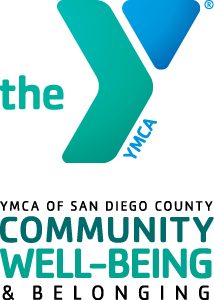Restart healthy habits at the Y! That’s what we’ve asked you all to do, after what has become an entire year of being thrown off anything resembling a routine.
Way back in 2020, we said, reaching from the couch for a bag of chips, “it’s OK, we’re in a pandemic. Everybody’s just trying to cope.”
But now it’s time to embrace that overused term “pivot” and get back on track — whether that means shedding a few or 15 pounds, hefting weights to build strength, or tuning in to a virtual BODYPUMP class — and actually doing it. Let’s toss out those not-so-healthy habits and stick to some good ones for 2021.
With any luck, you’re already off to a good start. And if you’re like most people, your resolution may be waning as we get into February. Ideally, whatever you’re doing to get your body healthier — moving more, eating less, laughing more, stressing less — will soon become a habit.
How do habits happen?
You may have heard of the 21-Day Rule, a theory popularized in the 1960s by Dr. Maxwell Maltz. The plastic surgeon observed that his patients took a minimum of 21 days to mentally adjust to their procedures. Over time, writers dropped that critical word “minimum,” and 21 days became the gold standard for habit formation. The truth is, while some people really can form a habit in 21 days, most people need a bit longer — two to three months is much more common.
Tips for picking up a good thing
Since we can’t count on a magic number of days or weeks and — voila! — habit formed, let’s focus on some tips that will help us get there, whether it takes 21 days or 200 days.
Context is key
We learn habits by repeating an action and getting rewarded for it. Psychologist Wendy Woods found that 43 percent of what we do every day is repeated in the same context, usually while we’re thinking about something else. Habits, she says, form from what we do, rather than what we decide or think.
People tend to think that forming a good habit is all about self-control. If you have a lot of willpower, you’ll be good at it. But researchers found out that people who score highly on the scale of self-control aren’t necessarily masters of self-denial. They are, instead, really good at placing themselves in an ideal environment in which to form a habit. They choose situations — context — in which it’s easier to repeat the desired action. In short, make it easy to do the right thing.
Alley Stewart, health and wellness director at Toby Wells YMCA and a personal trainer, agrees: “I always tell clients to clean out their kitchen cabinets and refrigerators. Get rid of unhealthy foods/drinks that trigger you. Replace them with healthy options. Plan your meals for the week on Sunday, and do as much meal prep as you can. You have to set yourself up for success!”
If you’re looking to make exercise a habit, “find a workout partner, trusted friend, family member, or a YMCA member, instructor or trainer to support you on your fitness journey,” recommends Chad Prokop, department head at South Bay Family YMCA. “Whether it’s joining you for a socially distanced workout, joining a group exercise class, or providing words of encouragement, having a strong support system will provide you strength and motivation to push toward your goals.”
Chad points out that creating context can mean committing to a block of time, by “waking up a few minutes earlier, breaking a sweat on your lunch break or exercising during your child’s nap time or break from distance learning. Setting time aside for yourself will not only make you feel better, but it will also provide more space and energy to provide care, love and support for others!”
Repeat, repeat, repeat
Once you’ve established the ideal context to point you in the direction of success, repeat and repeat again. “I've often said that exercise has to be a life choice in your brain, Stewart says. “In the same way you get up every day and wash your face and brush your teeth, exercise has to become a part of your normal daily routine. That happens through repetition.”
“Mark your calendar with the date, time, place and type of workouts for the next week (or more),” Chad advises.
What’s in it for me?
All this context and repetition is a good start, but without a reward, your habit isn’t going to happen. How do you start to recognize and feel rewarded in behaviors that you don’t really like, but that you want to do?
Find a way to make it enjoyable. Maybe riding a stationary bike isn’t your thing, but pedaling while catching up on your favorite show makes it bearable — maybe even enjoyable.
“My whole philosophy of fitness is that it should be fun!” Alley says. “I try to make my group exercise classes feel like a party, so people leave thinking, ‘that was fun; I can't wait to do that again.’”
“Explore a variety of different exercise choices,” Chad recommends. “Find what you enjoy the most and make it part of your routine! Exercise doesn't have always have to be an hour-long vinyasa yoga class or a long-distance run. Small positive steps add up over time and put us in a position to form healthy habits that make fitness part of our active lifestyle.”
What if I slip up?
If you slip up, don’t give up. Be in it for the long game. The pandemic has challenged all of us, and it’s not over yet.
Look for workouts with Chad and Alley at Virtual Y! We promise a rewarding experience.


